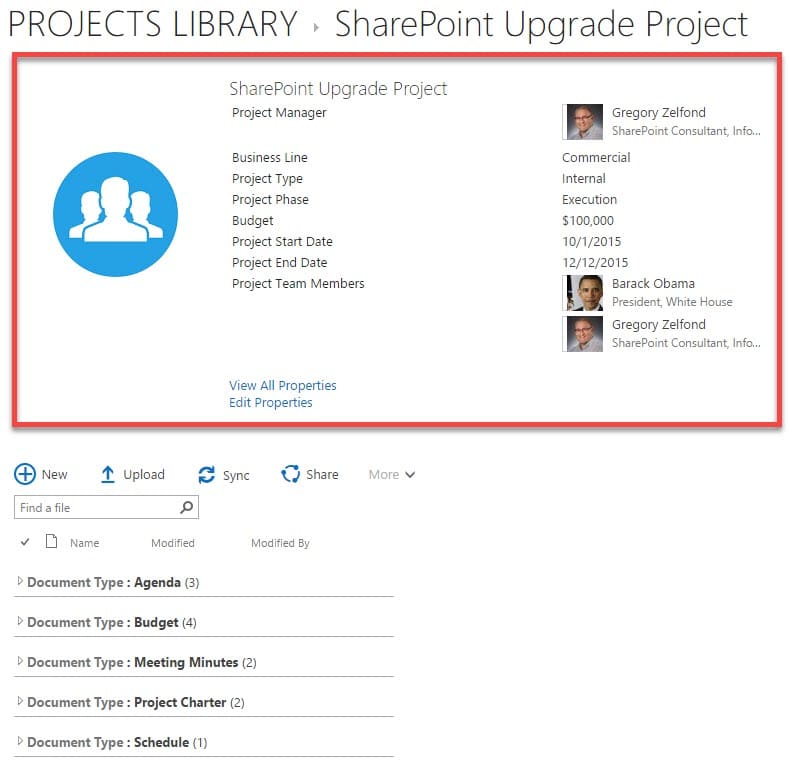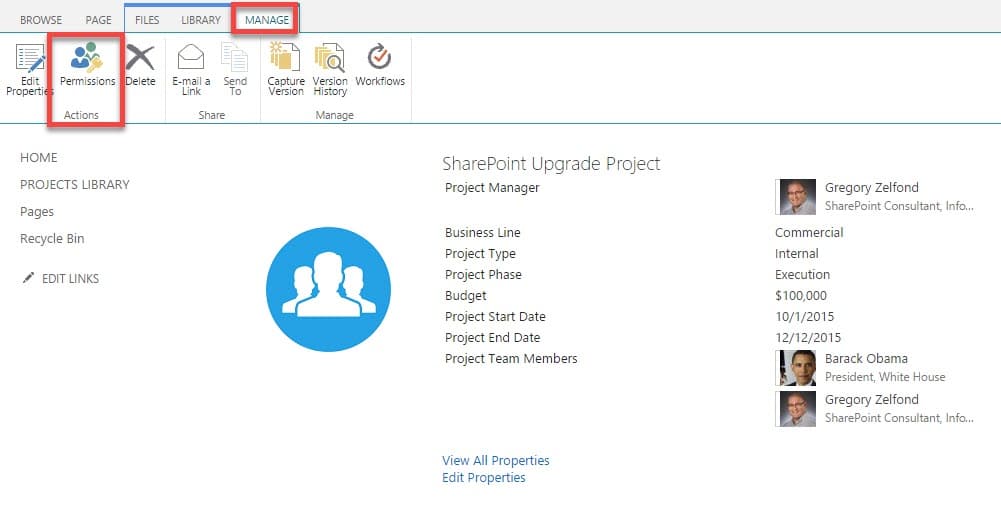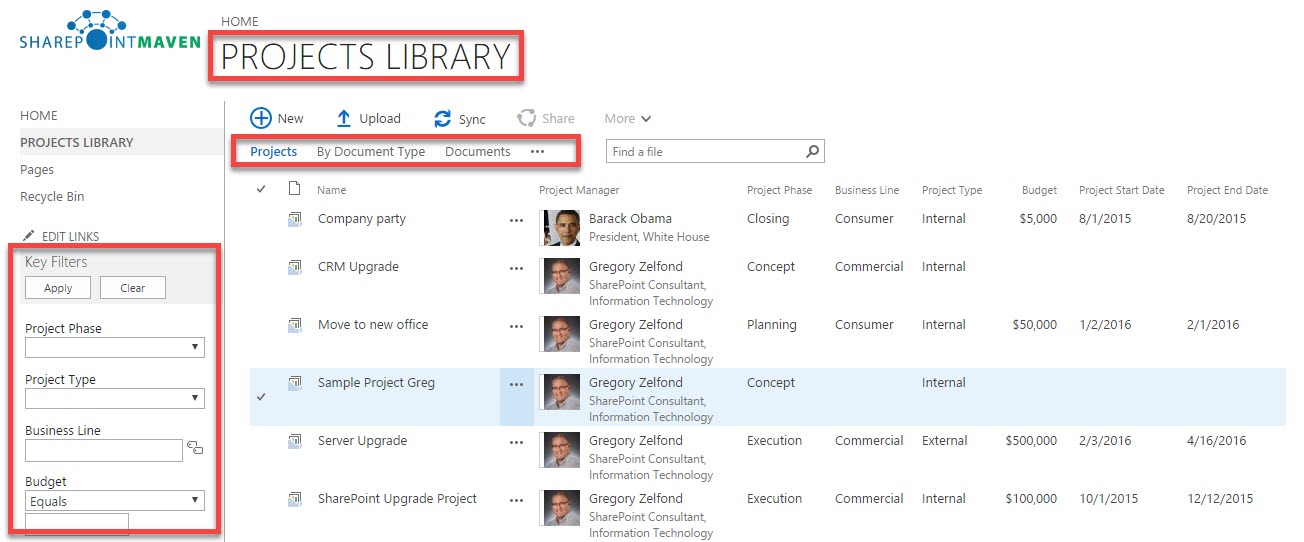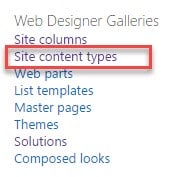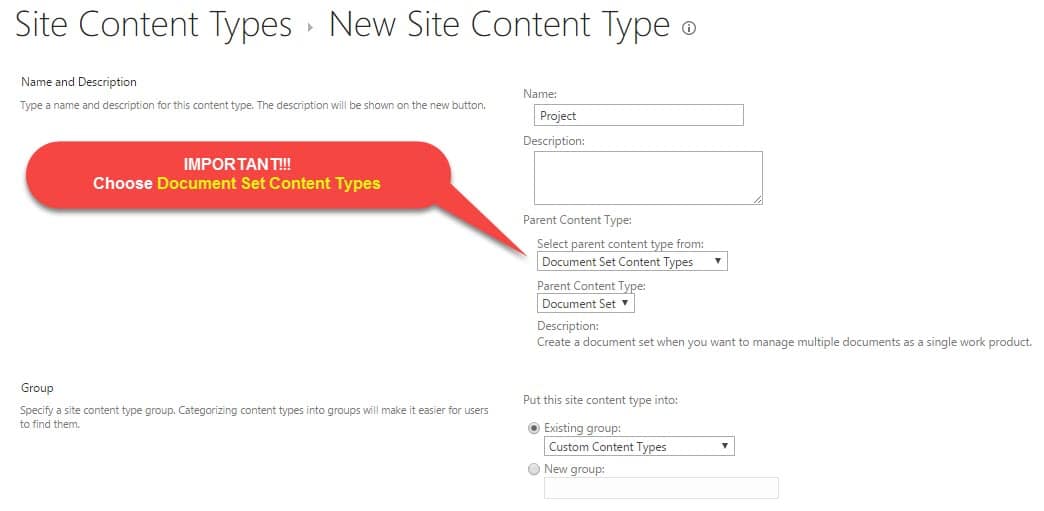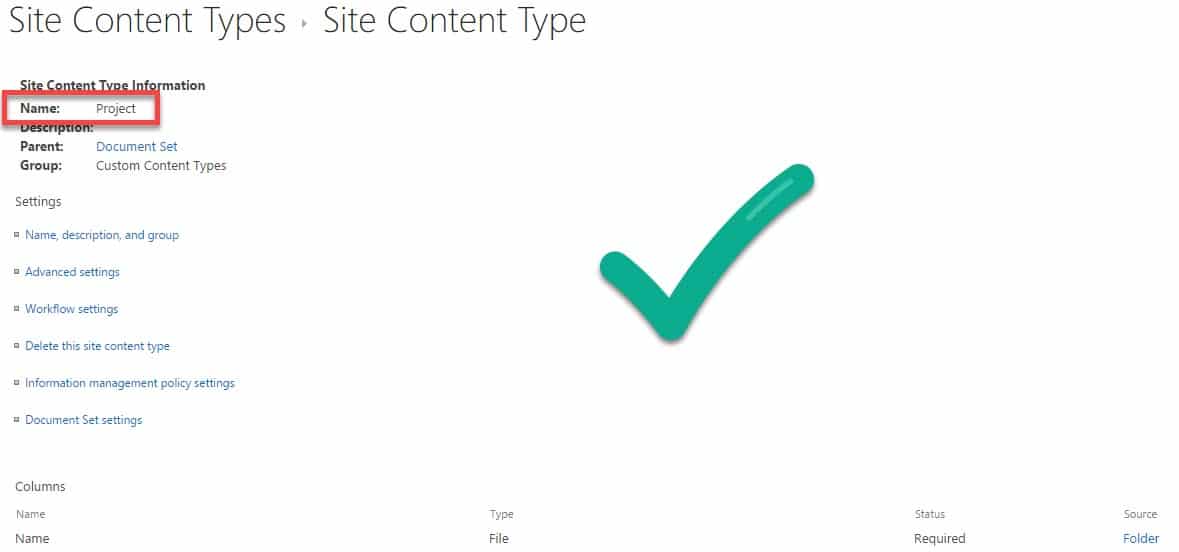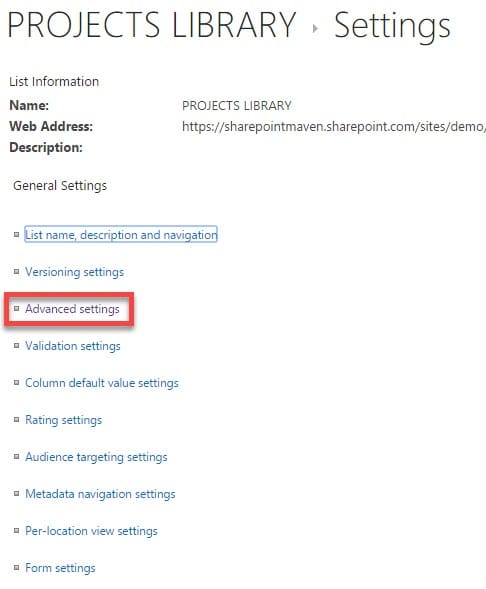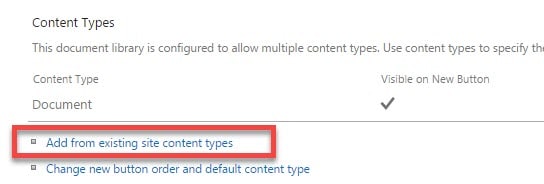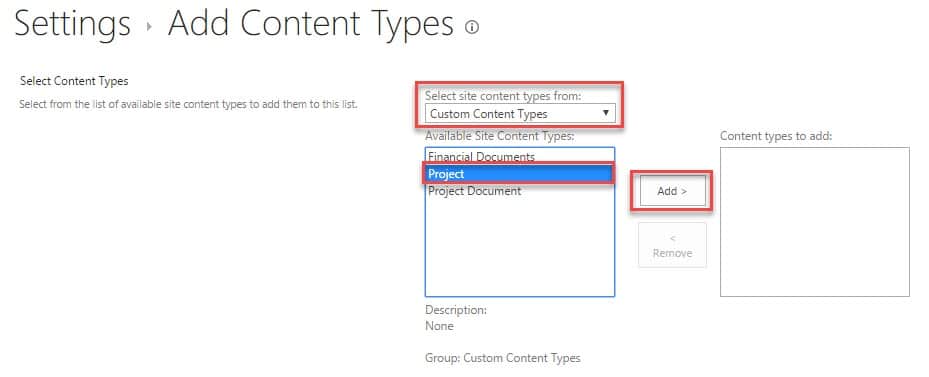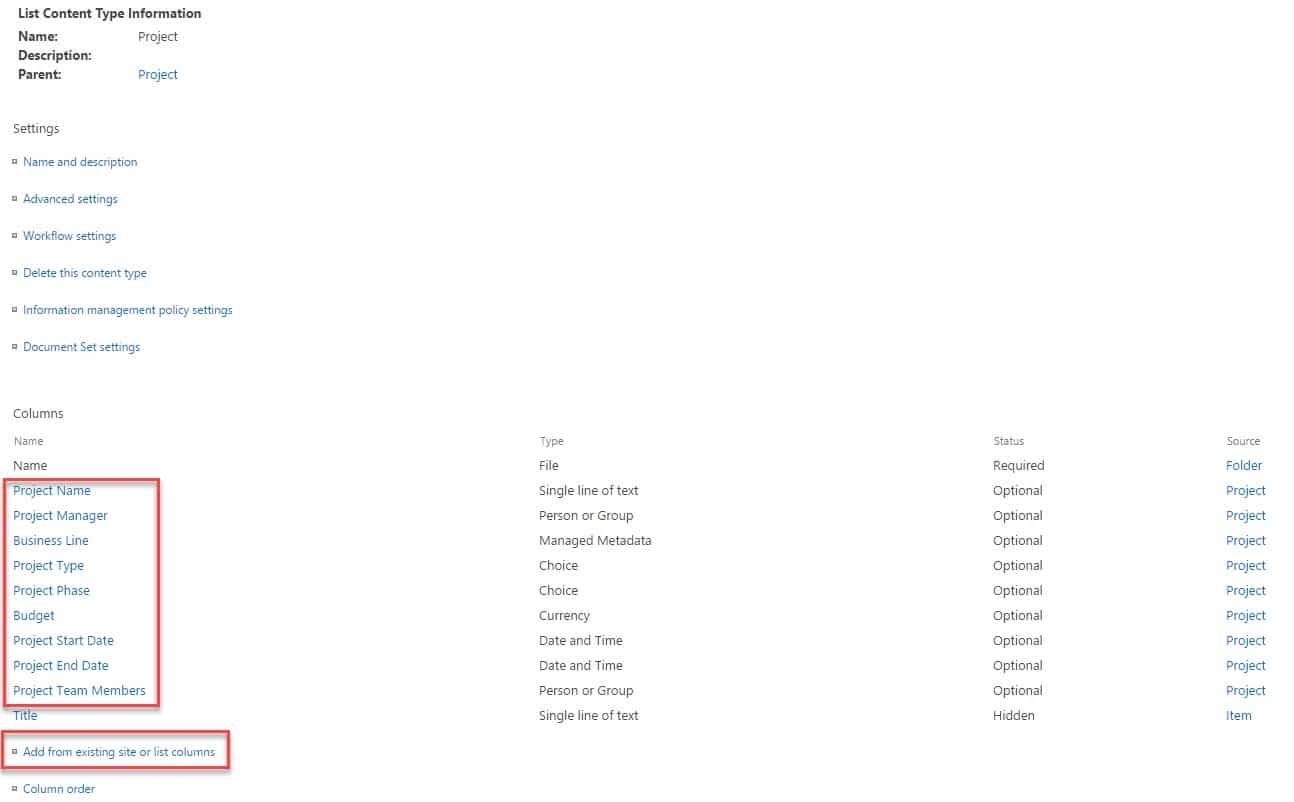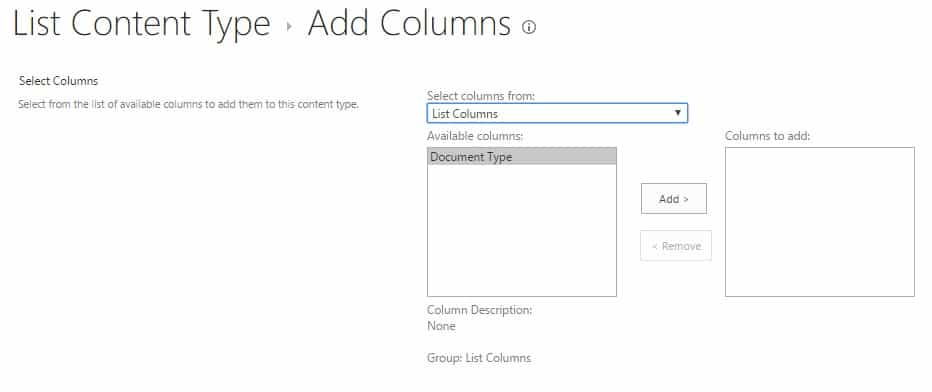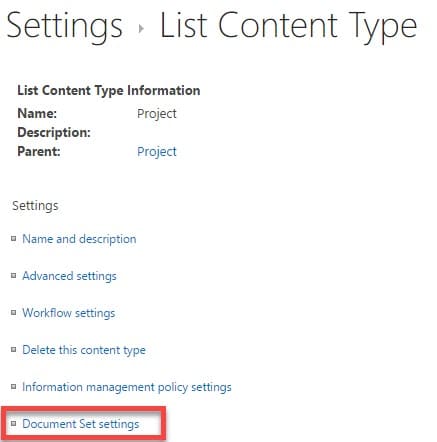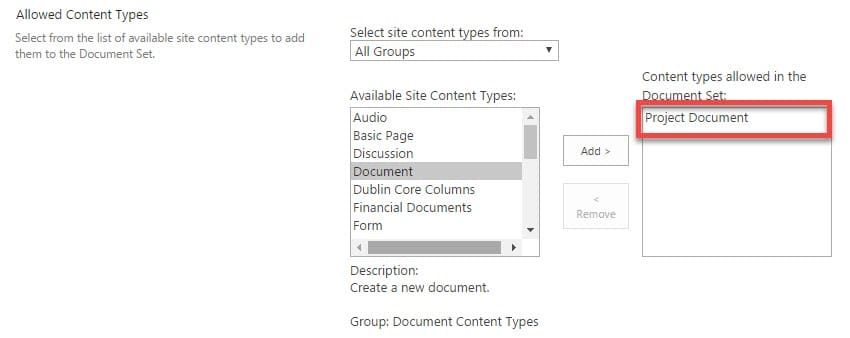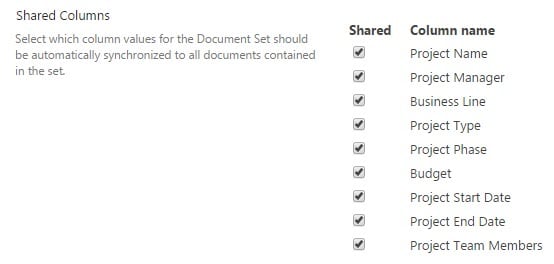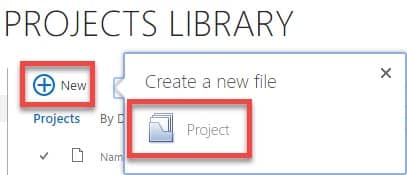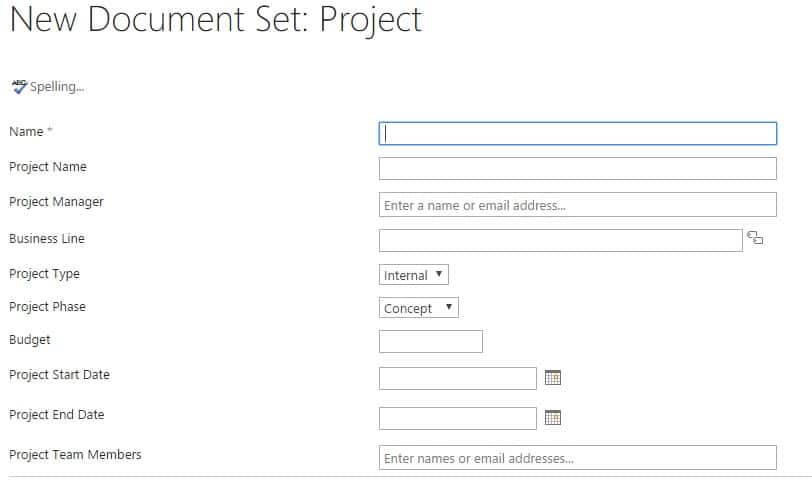SP
Namespace
SharePoint 2010
Last modified: June 14, 2011
Applies to: SharePoint Foundation 2010
Provides a subset of
types and members in the Microsoft.SharePoint namespace for
working with a top-level site and its lists or child Web sites.
Classes
The following table
lists classes in the SP namespace that are supported for
public use in Microsoft SharePoint Foundation 2010.
|
Name
|
Description
|
|
Enumerates the
values for an array.
|
|
|
Represents a
base64-encoded array.
|
|
|
Represents a
collection of objects.
|
|
|
Enumerates the
values for an SP.BaseCollection.
|
|
|
Specifies a set of
built-in permissions.
|
|
|
Defines a client for
adding datapoints and streams to the Software Quality Metrics (SQM) data file.
|
|
|
Contains the
configuration information for the Software Quality Metrics (SQM) data.
|
|
|
This class and its
members are reserved for internal use and are not intended to be used in your
code.
|
|
|
This class and its
members are reserved for internal use and are not intended to be used in your
code.
|
|
|
This class and its
members are reserved for internal use and are not intended to be used in your
code.
|
|
|
This class and its
members are reserved for internal use and are not intended to be used in your
code.
|
|
|
Specifies a
Collaborative Application Markup Language (CAML) query on a list.
|
|
|
Base type for a
description of a change to an object.
|
|
|
Indicates a change
to an alert.
|
|
|
Specifies properties
of the SP.ChangeAlert Class.
|
|
|
Represents a
collection of SP.Change Class objects.
|
|
|
Indicates a change
to SP.ContentType Class.
|
|
|
Specifies properties
of the SP.ChangeContentType Class.
|
|
|
A change on a Field.
|
|
|
Specifies properties
of the SP.ChangeField Class.
|
|
|
A change on a File
not contained in a document library.
|
|
|
Specifies properties
of the SP.ChangeField Class.
|
|
|
A change on a Folder
not contained in a list or document library.
|
|
|
Specifies properties
of the SP.ChangeFolder Class.
|
|
|
A change on a Group.
|
|
|
Specifies properties
of the SP.ChangeGroup Class.
|
|
|
A change on an item.
|
|
|
Specifies properties
of the SP.ChangeItem Class.
|
|
|
A change on a list.
|
|
|
Specifies properties
of the SP.ChangeList Class.
|
|
|
Specifies properties
of the SP.Change Class.
|
|
|
Defines a query that
is performed against the change log.
|
|
|
Specifies a change
on a site collection.
|
|
|
Represents the
unique sequential location of a change within the change log.
|
|
|
A change on a user.
|
|
|
Specifies properties
of the SP.ChangeUser Class.
|
|
|
A change on a view.
|
|
|
Specifies properties
of the SP.ChangeView Class.
|
|
|
A change on a site.
|
|
|
Specifies properties
of the SP.ChangeWeb Class.
|
|
|
Provides an abstract
class for invoking methods and setting properties on a server.
|
|
|
Represents the
ending of a client request.
|
|
|
Represents the
beginning of a client request.
|
|
|
This class and its
members are reserved for internal use and are not intended to be used in your
code.
|
|
|
This class and its
members are reserved for internal use and are not intended to be used in your
code.
|
|
|
Records when a
client method is invoked. This class and its members are reserved for
internal use and are not intended to be used in your code.
|
|
|
Records the
invocation of a client object static method. This class and its members are
reserved for internal use and are not intended to be used in your code.
|
|
|
Records the setting
of the client object static property.
|
|
|
Records the setting
of a client object static property.
|
|
|
Contains all the
constants related to the SP.ClientObject Class object. This
class and its members are reserved for internal use and are not intended to
be used in your code.
|
|
|
Represents the
context for SharePoint objects and operations.
|
|
|
Initializes a
generic dictionary with JavaScript Object Notation (JSON) data from the
server.
|
|
|
Contains integer
flags that represent the client error codes.
|
|
|
Provides a base
class for objects on a remote client.
|
|
|
Provides a base
class for a collection of objects on a remote client.
|
|
|
Provides a base
class to specify the "[" to retrieve for a SP.ClientObjectCollectionPrototype Class.
This class and its members are reserved for internal use and are not intended
to be used in your code.
|
|
|
This class and its
members are reserved for internal use and are not intended to be used in your
code.
|
|
|
Represents the
properties of the client object. This class and its members are reserved for
internal use and are not intended to be used in your code.
|
|
|
Represents a
prototype instance that is used to specify the data to retrieve on the SP.ClientObject Class object. This
class and its members are reserved for internal use and are not intended to
be used in your code.
|
|
|
This class and its
members are reserved for internal use and are not intended to be used in your
code.
|
|
|
This class and its
members are reserved for internal use and are not intended to be used in your
code.
|
|
|
Builds and executes
a request from the client to the server.
|
|
|
Provides the SP.ClientRequest Class arguments for
the event that is raised when a client request is executed.
|
|
|
Provides data for
the exception handling method when a SP.ClientRequest Class execution fails.
|
|
|
Provides data for
the handling method when a SP.ClientRequest Class execution
succeeds.
|
|
|
Represents the
runtime context for accessing data from and invoking methods on remote
objects.
|
|
|
Represents the
version number for the client schema.
|
|
|
Represents a local
client object model version of a server-side property value.
|
|
|
Indicates a change
to an SP.ContentType Class object. Represents
a Web site or list content type.
|
|
|
Represents a
collection of Web site or list content types.
|
|
|
Specifies properties
that are used as parameters to initialize a new content type.
|
|
|
Represents the
content type identifier (ID) of a content type.
|
|
|
Specifies properties
of the SP.ContentType Class.
|
|
|
Specifies properties
of the SP.ContentType Class class.
|
|
|
Provides utility
methods to convert and output data.
|
|
|
This class and its
members are reserved for internal use and are not intended to be used in your
code.
|
|
|
Represents an
enumerable array.
|
|
|
This class and its members
are reserved for internal use and are not intended to be used in your code.
|
|
|
Ignores an exception
that is raised by the server, or executes code in response to an exception
that is thrown by the server.
|
|
|
This class and its
members are reserved for internal use and are not intended to be used in your
code.
|
|
|
Represents an
activated feature.
|
|
|
Represents a
collection of SP.Feature Class objects.
|
|
|
Specifies properties
of the SP.Feature Class.
|
|
|
Represents a field
in a list on a Microsoft SharePoint Foundation Web site.
|
|
|
Specifies a
calculated field.
|
|
|
Represents the value
of the calculated field of a list item when the value of the field is a
calculation error, such as division by zero or overflow.
|
|
|
Specifies properties
of the SP.FieldCalculated Class.
|
|
|
Represents a choice
field control.
|
|
|
Specifies properties
of the SP.FieldChoice Class.
|
|
|
Represents a
collection of SP.Field Class objects.
|
|
|
Specifies properties
of the SP.FieldCollection Class.
|
|
|
Specifies a computed
field.
|
|
|
Specifies properties
of the SP.FieldComputed Class class.
|
|
|
Specifies a field
that contains currency values.
|
|
|
Specifies properties
of the SP.FieldCurrency Class.
|
|
|
Specifies a field
that contains date and time values.
|
|
|
Specifies properties
of the SP.FieldDateTime Class.
|
|
|
Specifies a field
that contains global unique identifier values.
|
|
|
Specifies a
reference to a field or field definition for a content type.
|
|
|
Represents a
collection of SP.FieldLink objects that are column or field
references in a content type.
|
|
|
Contains properties
that are used as parameters to initialize a FieldLink.
|
|
|
Specifies properties
of the SP.FieldLink Class.
|
|
|
Specifies a lookup
field.
|
|
|
Specifies properties
of the SP.FieldLookup Class.
|
|
|
Specifies the value
of a lookup for a field within a list item.
|
|
|
Specifies a field
that contains one or more values from a set of specified values.
|
|
|
Specifies properties
of the SP.FieldMultiChoice Class.
|
|
|
Specifies a field
that can contain multiple lines of text.
|
|
|
Specifies properties
of the SP.FieldMultiLineText Class.
|
|
|
Specifies a field
that contains number values.
|
|
|
Specifies properties
of the SP.FieldNumber Class.
|
|
|
Specifies properties
of the SP.Field Class.
|
|
|
Specifies a field
that contains rating scale values for a survey list.
|
|
|
Specifies properties
of the SP.FieldRatingScale Class.
|
|
|
Represents a
specific sub question and answer within a rating scale field of a list item.
|
|
|
Represents a
collection of key-value pairs that specify string values for fields.
|
|
|
Specifies a field
that contains a single line of text.
|
|
|
Specifies properties
of the SP.FieldTextPropertyNames Class.
|
|
|
Specifies a field
that contains a URI.
|
|
|
Specifies properties
of the SP.FieldUrl Class.
|
|
|
Specifies the
hyperlink and the description values for FieldURL.
|
|
|
Specifies a field
that contains a user.
|
|
|
Specifies properties
of the SP.FieldUser Class.
|
|
|
Represents the value
of a user field for a list item.
|
|
|
Represents a file in
a SharePoint Web site that can be a Web Part Page, an item in a document
library, or a file in a folder.
|
|
|
Represents a
collection of SP.File Class objects.
|
|
|
Specifies properties
of the SP.File Class.
|
|
|
Specifies properties
of the SP.File Class.
|
|
|
Represents a version
of a SP.File Class object.
|
|
|
Represents a
collection of SP.FileVersion Class objects.
|
|
|
Specifies properties
of the SP.FileVersion Class.
|
|
|
Specifies properties
of the SP.FileVersion Class.
|
|
|
Represents a folder
on a SharePoint Web site.
|
|
|
Represents a
collection of SP.Folder Class objects.
|
|
|
Specifies properties
of the SP.Folder Class.
|
|
|
Specifies properties
of the SP.Folder Class.
|
|
|
A form provides a
display and editing interface for a single list item.
|
|
|
Represents a
collection of SP.Form Class objects for a list.
|
|
|
Specifies properties
of the SP.Form Class.
|
|
|
Represents a group
on a Microsoft SharePoint Foundation Web site.
|
|
|
Represents a
collection of SP.Group Class objects.
|
|
|
An object used to
facilitate creation of a cross-site group.
|
|
|
Specifies properties
of the SP.Group Class.
|
|
|
Specifies properties
of the SP.Group Class.
|
|
|
Represents a
globally unique identifier (GUID).
|
|
|
Represents
JavaScript Object Notation (JSON) data from the server used to initialize an
object.
|
|
|
Represents a list on
a SharePoint Web site.
|
|
|
Represents a
collection of SP.List Class objects.
|
|
|
Specifies the
properties of the new list.
|
|
|
Represents
information associated with a connection to an external data source.
|
|
|
The exception that
is thrown when the data for a list field or list item fails validation.
|
|
|
Describes a specific
validation failure when a list item is inserted or updated.
|
|
|
Represents an item
or row in a list.
|
|
|
Represents a
collection of SP.ListItem Class objects.
|
|
|
Specifies the
information required to get the next page of data for a list view.
|
|
|
Specifies properties
of the SP.ListItemCollection Class.
|
|
|
Specifies the
properties of the new list item.
|
|
|
Specifies properties
of the SP.ListItem Class.
|
|
|
Specifies properties
of the SP.ListItem Class class.
|
|
|
Specifies properties
of the SP.List Class.
|
|
|
Specifies properties
of the SP.List Class.
|
|
|
Specifies a list
template.
|
|
|
Represents a
collection of SP.ListTemplate Class objects.
|
|
|
Specifies properties
of the SP.ListTemplate Class.
|
|
|
Represents
navigation operations at the site collection level.
|
|
|
Represents the URL
to a specific navigation node and provides access to properties and methods
for manipulating the ordering of the navigation node in a navigation node
collection.
|
|
|
Represents a
collection of SP.NavigationNode Class objects.
|
|
|
Describes a new
navigation node to be created.
|
|
|
Specifies properties
of the SP.NavigationObjectPropertyNames Class.
|
|
|
Specifies properties
of the SP.NavigationNode Class.
|
|
|
Specifies properties
of the SP.ObjectPath Class.
|
|
|
Specifies properties
of the SP.Navigation Class.
|
|
|
This class and its
members are reserved for internal use and are not intended to be used in your
code. Creates the client object identity query that is used to retrieve the
object identity from the server.
|
|
|
Tracks how a client
object is created in the SP.ClientRuntimeContext Class, so that the
object can be re-created on the server. This class and its members are
reserved for internal use and are not intended to be used in your code.
|
|
|
This class and its
members are reserved for internal use and are not intended to be used in your
code.
|
|
|
This class and its
members are reserved for internal use and are not intended to be used in your
code.
|
|
|
This class and its
members are reserved for internal use and are not intended to be used in your
code.
|
|
|
This class and its
members are reserved for internal use and are not intended to be used in your
code.
|
|
|
This class and its
members are reserved for internal use and are not intended to be used in your
code.
|
|
|
This class and its
members are reserved for internal use and are not intended to be used in your
code.
|
|
|
Represents the
version information of Office products for Microsoft SharePoint Server.
|
|
|
Represents the
context associated with a page.
|
|
|
Represents a page
request.
|
|
|
Provides data for
the exception handling method when an SP.PageRequest Class execution fails.
|
|
|
Provides data for
the handling method when an SP.PageRequest Class execution
succeeds.
|
|
|
Represents a user or
group that can be assigned permissions to control security.
|
|
|
Specifies properties
of the SP.Principal Class.
|
|
|
Contains CSOM
expando properties, which is a collection name value pairs. The CSOM expando
field name is the name part in the name value pair. The CSOM expand property
value is the value part in the name value pair.
|
|
|
Represents a Recycle
Bin item in the Recycle Bin of a site or a site collection.
|
|
|
Specifies a
collection of SP.RecycleBinItem Class objects.
|
|
|
Specifies properties
of the SP.RecycleBinItem Class.
|
|
|
Specifies properties
of the SP.RecycleBinItem Class.
|
|
|
Specifies a
relationship to a lookup field.
|
|
|
Specifies a
collection of SP.RelatedField Class objects storing
properties of relationship lookup fields.
|
|
|
This class and its
members are reserved for internal use and are not intended to be used in your
code.
|
|
|
This class and its
members are reserved for internal use and are not intended to be used in your
code.
|
|
|
This class and its
members are reserved for internal use and are not intended to be used in your
code.
|
|
|
Specifies properties
of the SP.RelatedField Class.
|
|
|
Specifies properties
of the SP.RelatedField Class.
|
|
|
This class and its
members are reserved for internal use and are not intended to be used in your
code.
|
|
|
Specifies properties
of the SP.RequestContext Class.
|
|
|
This class and its
members are reserved for internal use and are not intended to be used in your
code.
|
|
|
Defines the
securable object role assignments for a user or group on the Web site, list,
or list item.
|
|
|
Represents a
collection of SP.RoleAssignment Class objects that
defines all the role assignments for each securable object.
|
|
|
Specifies properties
of the SP.RoleAssignment Class.
|
|
|
Defines a single
role definition, including a name, description, and set of rights.
|
|
|
Defines the role
definitions that are bound to a role assignment object.
|
|
|
Represents the
collection of SP.RoleDefinition Class objects that
define the role definitions that are available for use within the Web site.
|
|
|
Contains properties
that are used as parameters to initialize a role definition.
|
|
|
Specifies properties
of the SP.RoleDefinition Class.
|
|
|
Provides methods and
an emptyString field for working with ECMA scripts.
|
|
|
An object that can
be assigned security permissions.
|
|
|
Specifies properties
of the SP.SecurableObject Class.
|
|
|
Specifies properties
of the SP.SecurableObject Class.
|
|
|
Stores the SP.ObjectPath Class information of the
client object to transmit the path to the server This class and its members
are reserved for internal use and are not intended to be used in your code..
|
|
|
Represents a
collection of sites in a Web application, including a top-level Web site and
all its subsites.
|
|
|
Specifies properties
of the SP.Site Class.
|
|
|
Specifies properties
of the SP.Site Class.
|
|
|
Represents an
on-demand ECMA script.
|
|
|
This class and its
members are reserved for internal use and are not intended to be used in your
code.
|
|
|
Defines a query that
is used with the SP.Web.getSubwebsForCurrentUser(query_) Methodmethod
to specify which child Web sites to return from a Web site.
|
|
|
This class and its
members are reserved for internal use and are not intended to be used in your
code.
|
|
|
This class and its
members are reserved for internal use and are not intended to be used in your
code.
|
|
|
Provides a Unified
Logging Service (ULS) that monitors log messages.
|
|
|
Provides fields that
are used to access information about site collection usage.
|
|
|
Represents a user in
Microsoft SharePoint Foundation.
|
|
|
Represents a
collection of SP.User Class objects.
|
|
|
Parameters to invite
a user.
|
|
|
Represents a custom
action associated with a SharePoint list, Web site, or subsite.
|
|
|
Represents a
collection of SP.UserCustomAction Class objects.
|
|
|
Specifies properties
of the SP.UserCustomAction Class.
|
|
|
Specifies properties
of the SP.User Class.
|
|
|
Specifies a list
view.
|
|
|
Specifies a
collection of list views.
|
|
|
Specifies the
properties used to create a new list view.
|
|
|
Specifies the
collection of fields in a list view.
|
|
|
Specifies properties
of the SP.ViewFieldCollection Class.
|
|
|
Specifies properties
of the SP.View Class.
|
|
|
Specifies properties
of the SP.View Class.
|
|
|
Represents a
Microsoft SharePoint Foundation Web site.
|
|
|
Represents a
collection of SP.Web Class objects.
|
|
|
Specifies the
properties of a new site.
|
|
|
Specifies properties
of the SP.Web Class.
|
|
|
Specifies properties
of the SP.Web Class.
|
|
|
Specifies a site
definition or a site template that is used to instantiate a site.
|
|
|
Specifies a
collection of site templates.
|
|
|
Specifies properties
of the SP.WebTemplate Class.
|
|
|
This class and its
members are reserved for internal use and are not intended to be used in your
code.
|
|
|
Defines a writer
that provides a set of methods to append text in XML format.
|
Enumerations
|
Name
|
Description
|
|
Specifies the
control settings while adding a field.
|
|
|
Specifies the base
type for a list.
|
|
|
Specifies whether
the file is allowed to be displayed in the Web browser.
|
|
|
A calendar type is a
2-byte integer value that specifies the type of calendar to use in a
particular context.
|
|
|
Enumeration of the
possible types of changes.
|
|
|
Specifies the type
of check-in for a file.
|
|
|
Describes the
different checkout states of a file, independent of the lock state of the
file.
|
|
|
Specifies how
options for how to display selections in a choice field.
|
|
|
Specifies the status
of the client request during execution.
|
|
|
Specifies the cache
and customization status for a page.
|
|
|
Specifies the
display format for date and time fields.
|
|
|
Specifies whether an
instant in time represents a local time, a Coordinated Universal Time (UTC),
or neither local time nor UTC.
|
|
|
Specifies the
minimum permission required to view minor versions and drafts.
|
|
|
Specifies the
feature scope for a feature definition.
|
|
|
Specifies the type
of the field.
|
|
|
Specifies whether
users and groups or only users can be selected.
|
|
|
Specifies the
publishing level for a file.
|
|
|
Specifies the file
system object type.
|
|
|
Describes the reason
why a list item or a list item field failed validation.
|
|
|
Describes the type
of validation that caused a failure.
|
|
|
Specifies list
server templates.
|
|
|
Specifies criteria
for how to move files.
|
|
|
Page Type is a
signed 1-byte integer that is used to represent the possible page types.
|
|
|
Specifies
permissions that are used to define user roles.
|
|
|
Specifies whether
the list is displayed on the Quick Launch of the site.
|
|
|
Specifies the
Recycle Bin stage of the Recycle Bin item.
|
|
|
Specifies the type
of the Recycle Bin item.
|
|
|
Specifies the
optional relationship behavior of a relationship lookup field.
|
|
|
Specifies the types
of roles that are available for users and groups.
|
|
|
Specifies the value
of the datapoint ID for Software Quality Metrics (SQM).
|
|
|
Specifies the type
of template used for ghosted file creation.
|
|
|
Indicates the amount
of detail in a trace message.
|
|
|
Specifies the
display format of the field.
|
|
|
Specifies the type
of object associated with the custom action.
|
|
|
Specifies the scope
of the custom action.
|
|
|
Specifies the scope
for returning list items and list folders in a list view.
|
|
|
Specifies the type
of the list view.
|

